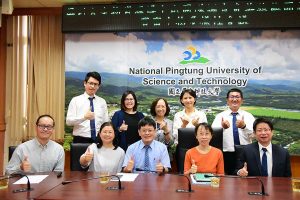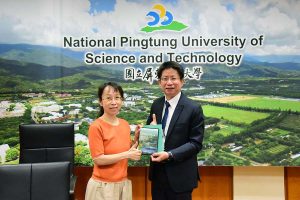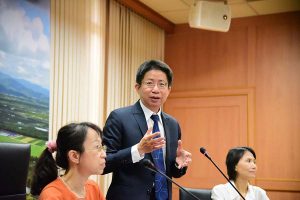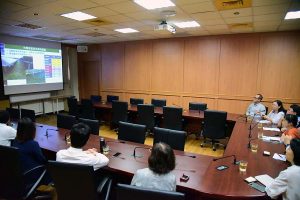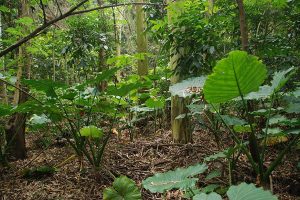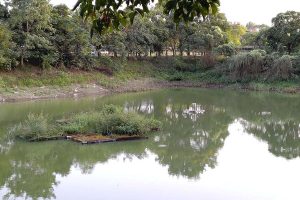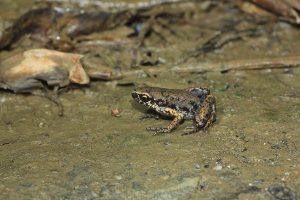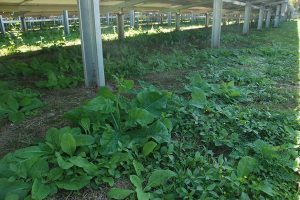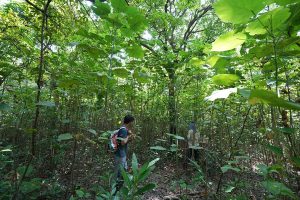In 2021, Chimei Corp commissioned Associate Professor I-Ling Lai and her team from the NPUST Bioresources Ph.D. Program to conduct ecological surveys of animals, plants and the soil at their Green Energy Park in Shanhua, Tainan. So far, the survey has shown that in addition to the planted vegetation, there were 221 plant species that spread naturally, bringing the total to 324 plant species in the area. The rich flora and healthy soil also attracted 300 species of wild animals, including 31 species endemic to Taiwan and 8 species of protected animals.
On October 16, 2020, in the Second Conference Room at the NPUST Administration Building, Associate Professor Lai and her team announced the results of their survey work. Chimei released an investigative documentary on the same, entitled “Gift of the Sun”, which compiled wonderful images collected during a year of on-site shooting. NPUST Vice President Wen-Ling Shih, environmental educator Junhao Lin of You Yuan Ecological Farm, Chimei Corp vice-general manager Denis Chen and director Stella Hsu were present to witness the efforts of the teams.
Vice President Shi Wen-Ling Shih of NPUST delivered a speech, saying “the Chi Mei Green Energy Park is the first solar plant in Taiwan that allows for symbiosis between trees and electricity. It not only creates an excellent environment for biodiversity, but also provides clean and sustainable energy by implementing concepts of ecological coexistence and common prosperity. We look forward to creating more opportunities to cooperate with Chi Mei, and working with them to cultivate talents, protect the earth, and create a better future for the world.” Associate Professor I-Ling Lai said, “to have such a rich variety of wildlife, may be due to the fact that this park provides a safe and comfortable environment for wild animals and plants— rich in food sources, it is a place where they can live and find refuge. It is like a small biological sanctuary in the Chianan Plain which gives low-altitude biological species a space to rest and survive.” Chimei Corp vice-general manager Denis Chen said “in order to make the Chimei Green Energy Park operate in a sustainable manner, all equipment is monitored intelligently. In addition to keeping the original soil on the ground to replace the cement fill, no detergents or weeding agents are used during maintenance processes. This is the only way to reduce human interference as much as possible and promote the development of biological diversity.”
Based on a concept of “tree and electricity symbiosis”, Chimei Corp transformed 40 hectares of idle factory land in Tainan into a green energy park while retaining native trees and vegetation to the maximum extent. It designated 15 hectares as a solar energy plant which can generate approximately 2,000 kilowatt hours of electricity annually. Additionally, more than 20,000 trees are spread through the park’s 25 hectares of secondary forests and restoration areas along with flood detention ponds and other environmental features.
According to the results of the NPUST survey, even in the solar panel area, 112 types of plants have made their way in naturally (mainly herbaceous plants). Among these, 73 species are native plants, most of which are common at low altitudes in southern Taiwan, such as maidenhair fern, black nightshade, blue pig-ear, and creeping woodsorrel. This can be attributed to Chimei’s use of panel foundations with zero concrete, and zero paving done in the entire area. They also do not use herbicides, and only use manual weeding. Also, when cleaning the solar panels, they only use water to avoid damaging the soil with harmful substances. Meanwhile, in the park’s tree preservation areas and flood detention areas, rare and distinctive species such as whisk fern, damascisa, and rough horsetail can be seen. Animals living in the area include Taiwan’s unique and endangered Stejneger’s paddy frog, and golden thread turtle (internationally listed as a critically endangered species). A variety of birds can also be found patrolling the airways, including the crested serpent eagle, black-winged kite, and collared scops owl, showing that the park has a complete food chain and strong biodiversity. Stable populations of rimmed window fireflies and dragon flies, are further evidence that the environment on land and on the water is quite good. The rich flora and fauna in the Green Energy Park are impressive, and are a good testament to the philosophies adopted at NPUST to pursue ecological sustainability. Associate Professor I-Ling Lai and her team will continue to cooperate with Chimei to create natural habitats and living spaces for wild animals and plants by adding floating plant islands to the detention ponds. This will provide birds, insects or aquatic creatures more places to hide from land predators. They also plan to build nest boxes in the forests where friendly birds or squirrels can raise their young. Raptor perches have already been set up in the solar panel area, and black-winged kites have already been recorded using them. The joint efforts of NPUST and Chimei to create friendly environments through “tree-electricity symbiosis” are regarded with high expectations amongst those looking for ways to maintain biodiversity while also benefiting people.





